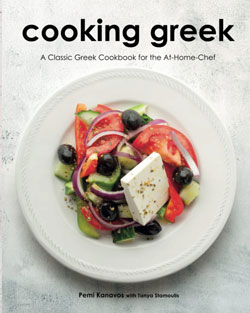mj_toronto8
Active member
Feta is the most famous of the Greek cheeses. I love to eat it in Greek salads, I put it in my tiro pita, and I love to eat it all by itself. It is such an important part of Greek cuisine!
It is a brined curd cheese made from sheep’s milk or goat's milk, feta is salty and tangy in taste due to the brining process. The name “feta” comes from the Italian word ‘fette’ meaning slice or slab, referring to the way in which it is formed into its signature block shape.
It's also cool how special it is - it is classified as “Protected Designation of Origin” (PDO) due to its official geographical origin being tied solely to Greece and must be produced using specific traditional methods in order for it to be given this designation
Its flavor profile can range from mild with crunchy crystals formed through aging process to sharp if aged longer than seven months. It often has small eyes or openings throughout its texture which can resemble those found in Swiss Emmentaler or Italian Grana Padano cheese.
What are your favorite ways to use feta cheese?
It is a brined curd cheese made from sheep’s milk or goat's milk, feta is salty and tangy in taste due to the brining process. The name “feta” comes from the Italian word ‘fette’ meaning slice or slab, referring to the way in which it is formed into its signature block shape.
It's also cool how special it is - it is classified as “Protected Designation of Origin” (PDO) due to its official geographical origin being tied solely to Greece and must be produced using specific traditional methods in order for it to be given this designation
Its flavor profile can range from mild with crunchy crystals formed through aging process to sharp if aged longer than seven months. It often has small eyes or openings throughout its texture which can resemble those found in Swiss Emmentaler or Italian Grana Padano cheese.
What are your favorite ways to use feta cheese?


